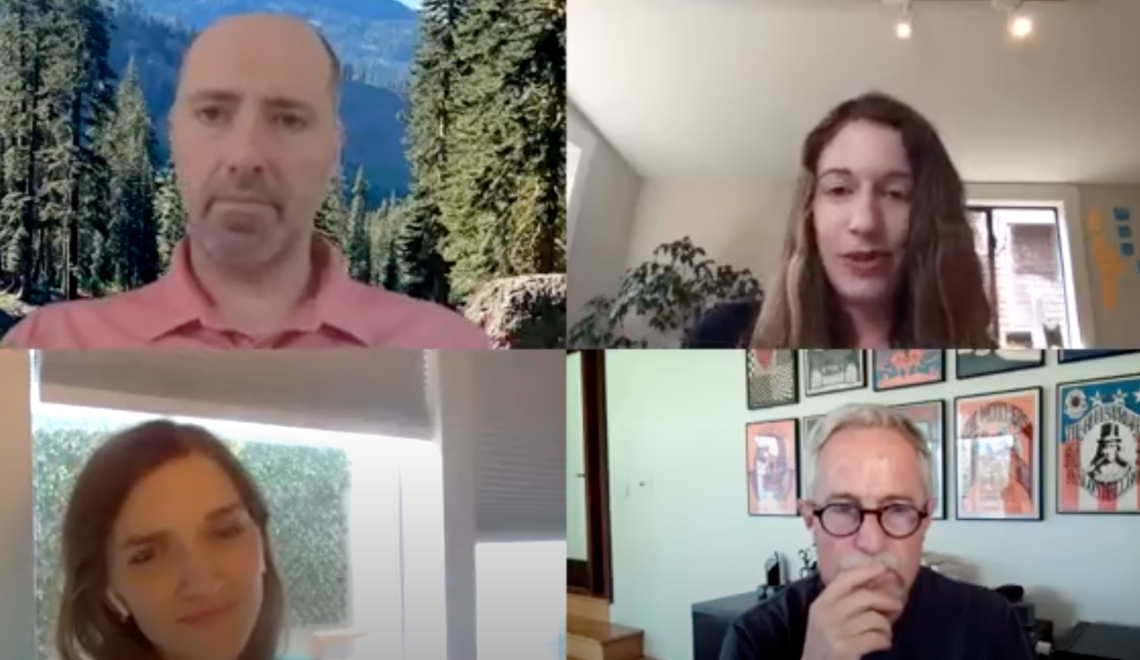
It is no secret that our world will face problems feeding the growing population, but there is also a hidden layer to the grand challenge of feeding the world; how do we feed the increasing population of the world while not destroying the environment? There are countless propositions about how to solve this problem. Some of them are viable, and some of them may be considered to be completely “out there”. However, it is important to consider all options, even if they seem crazy.
Take synthetic meat for example. It sounds completely crazy; it must be science fiction, right? Surely the production of meat isn’t so environmentally unfriendly. Consider these facts:
Food production accounts for 83% of greenhouse gas emissions produced by humans.
Of that 83%, 10-25% is attributed to that of animal agriculture or the production of meat with 1 kg of beef equaling 14.8 kg of CO2.
The world is also demanding more meat, about 115 g/day on average.
Within the last decade, meat consumption has increased in almost every country on earth, especially in middle and low-income families.
Increased meat consumption is not just due to an increasing population, but increasing levels of income. With greater income families are able to spend more money on higher protein foods that traditionally cost more.
The increase in meat consumption is the most dramatic in China where meat consumption has increased 130% since 1990.
Global meat consumption has been predicted to double by 2050. This would mean that meat production must double by 2050 to meet global demands.
How can the world double its meat production without doubling the greenhouse gas emissions produced by animal agriculture?
The widespread production and use of synthetic meat has been one proposed solution. The production of synthetic meat, particularly beef, involves the use of animal stem cells and a bioreactor to produce muscle tissue. If widely produced and accepted, synthetic meat could reduce greenhouse gas emissions, decrease the use of animals as food, decrease land, water, and energy use, increase efficiency, and could even potentially improve health
Animal agriculture produces 20% of the world’s total greenhouse gas emissions. Synthetic meat would essentially eliminate the need to raise, feed, transport, and process animals for their meat. By producing just the muscle tissue itself, less energy would have to be put into raising cows for beef. Cows produce a very large amount of methane through their digestion, and thus release a large amount of methane into the atmosphere. Although it is unlikely that the use of actual cows in the production of beef would be eliminated entirely, the switch to consuming synthetic meat would reduce the amount of greenhouse gas emissions by animal agriculture by 78-96%.
Synthetic meat also has the potential to increase animal welfare. About 34 million cows are killed for their meat every year in the United States alone. Through the use of synthetic beef, no cow would need to be killed since the use of stems cells in the production of synthetic meat does not require that the animal be killed.
Similar to the decrease in greenhouse gas emissions, the increase in efficiency of synthetic meat is one of the most favorable potential outcomes. The production of conventionally grown meat is incredibly less efficient than synthetic meat production could be. Conventionally produced meat requires a large amount of water, energy, land, and grain to produce an unequal amount of muscle tissue. However, one estimation states that one sample of stem cells could be used to make about 20,000 tons of muscle tissue without the need for large amounts of water or grain that could otherwise be directly consumed by people. It is also estimated that synthetic meat has the potential to use 99% less land and 96% less water than conventionally produced meat. Of course, energy of some sort would be needed to produce synthetic meat, but depending on the source of energy synthetic meat is estimated to use 7-45% less energy it its production than conventionally produced meat.
Finally, though it may be too early to tell, synthetic meat could prove to be healthier than conventionally produced meat. It is recommended to consume red meat, like beef, in moderation since an overconsumption has been shown to put people at risk for such conditions as heart disease. The production of synthetic meat is more controlled so the nutrients that go into the meat could also be controlled. Fat could also be grown and added. Synthetic meat would also be produced in a more sterile environment; all but eliminating the risk for foodborne pathogens commonly associated with meat like Escherichia coli and Listeria monocytogenes. Although, it would be important to keep in mind that too much of a sterile environment can cause immune systems to weaken in people.
Like any new technology or idea, synthetic meat is not without its flaws. The current process used to grow the meat requires specialized infrastructure and highly trained scientists. In order to make the production of synthetic meat widespread, many specialized facilities would need to be built and maintained. Personnel would also need to be trained in the highly technical procedure. Infrastructure barriers would be especially difficult to overcome in developing countries. There are also issues with funding for synthetic meat research that is keeping the idea from coming into fruition, not to mention numerous moral and ethical issues.
Moreover, it would technically be more energy efficient and better for the environment if people didn’t eat meat or its consumption was greatly reduced. Eliminating the cause the problem would obviously solve it, but it may be hard to convince the world of that.
Whether or not synthetic meat is a solution for feeding the world or saving the environment remains to be seen. As with any issue, there are advocates for both sides and numerous roadblocks. Synthetic meat could be the future, but it also could not; it could be part of the solution, or it could be part of the problem. That is the nature of research and why it is necessary. How can we find a solution without exploring options? Through research and exploration of the many options presented to us, we can hope to find viable solutions.
Sources
(1) Bartholet, Jeffery. “Inside the Meat Lab.” Nature.com. Nature Publishing Group, June 2011. Web. 02 Nov. 2014.
(2) Tuomisto, Hanna L., and M. Joost Teixeira De Mattos. “Environmental Impacts of Cultured Meat Production. Environmental Science and Technology, 2011. Web. 02 Nov. 2014.
(3) “Synthetic Beef and the Future of Food.” Make Wealth History. N.p., 8 Aug. 2013. Web. 02 Nov. 2014.
(4) “The Future of Meat.” Make Wealth History. N.p., 23 Feb. 2013. Web. 02 Nov. 2014.











It’s hard to come by experienced people about this subject, however, you sound
like you know what you’re talking about! Thanks
I’m so glad you liked it! Thanks for reading!